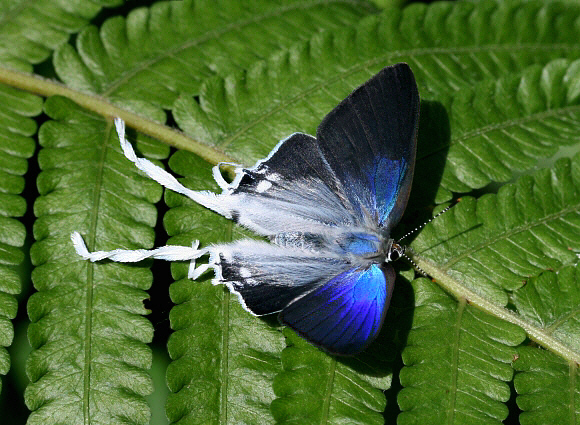
Introduction
There are 45 members of the genus Hypolycaena, of which 22 are found in the Afrotropical region, 1 in the Holarctic region ( China ), and 18 in the Oriental region. In the Australian region a further 4 species are found but they differ in certain ways from other Hypolycaena species, and a new genus may need to be erected to contain them.
The African Hypolycaena species are collectively known as Fairy Hairstreaks.
Hypolycaena antifaunus is a common and widespread species, found from Sierra Leone to Angola, Uganda and western Tanzania.
Habitats
This species is found in open sunlit areas within rainforest, and is also frequent in secondary forest and forest edge habitats. It is found from sea level to at least 800m altitude.

Lifecycle
The larval foodplant is not recorded. Certain other African Hypolycaena species e.g. philippus, are polyphagous, while others have a restricted range of foodplants.
Adult behaviour
Males can commonly be found imbibing mineralised moisture from muddy forest roads. They often bask on low foliage, with the wings held half open, displaying their brilliant metallic sapphire-blue uppersides. Both sexes nectar at various wild flowers, holding their wings erect when feeding.
The territorial males can frequently be seen in aerial combat, spiralling around each other, rising and falling as they drift together, cavorting, along forest tracks – a very pretty sight indeed.
When at rest on foliage, the butterflies periodically oscillate their hindwings, which causes the long filamentous tails to wiggle. This draws the attention of predators to the rear of the butterfly, which has the appearance of a “false head”. Birds expect butterflies to fly forward, so they aim their attack just ahead of the insect . The back-to-front illusion created by the false head fools them into aiming behind instead, and the butterfly flies in the opposite direction and makes its escape.
